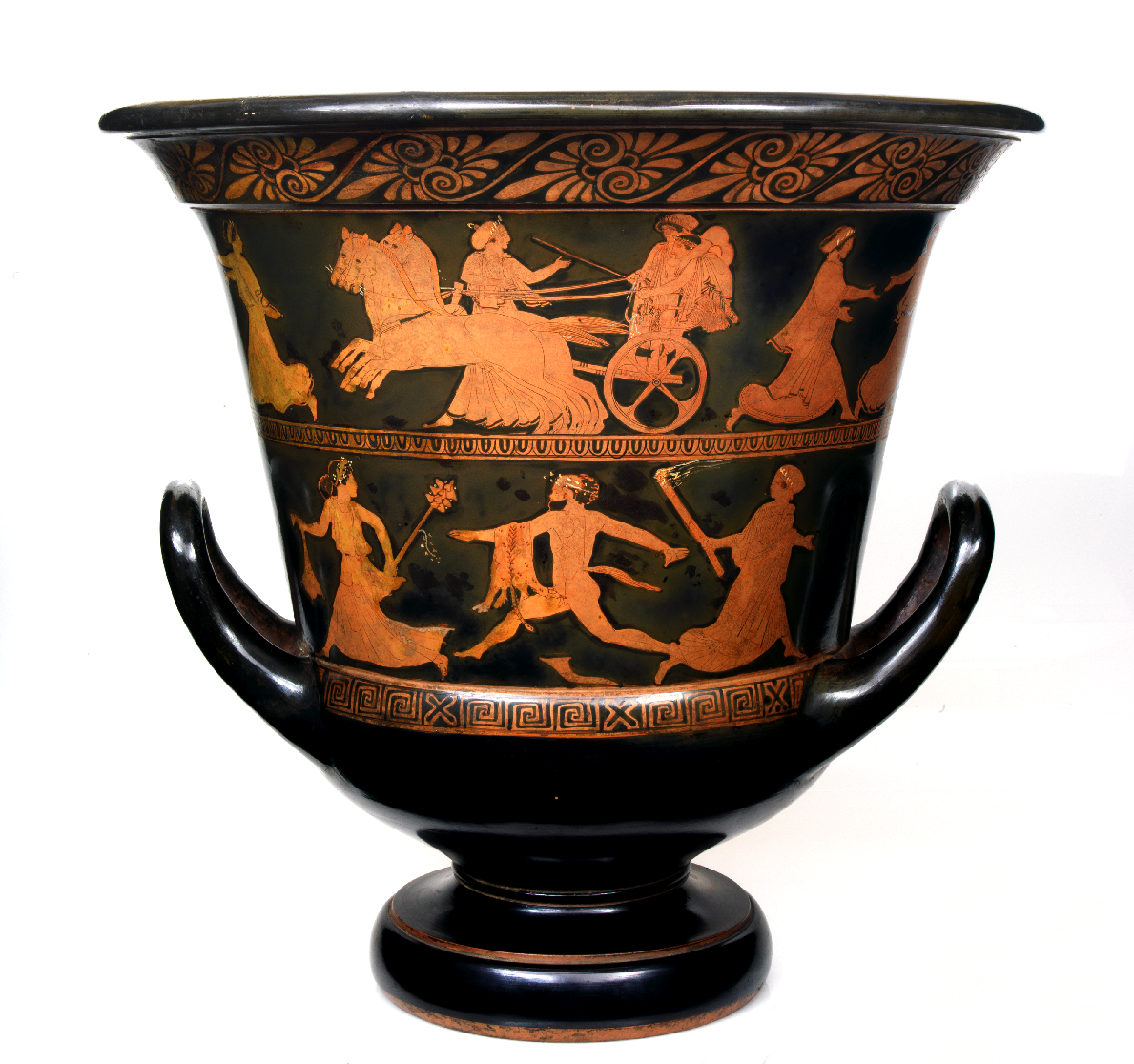
- Attica, c. 440 BC
- Terracotta
- Inv. 682
Greek vase
This calyx-krater shaped vase in terracotta painted by the ‘red figure’ technique, displays the ‘free style’ characteristic of the mid-5th century BC. The narrative themes are of a mythological nature, on two levels, the upper part depicting the abduction of the daughters of Leucippus by the twin deities Castor and Pollux. The lower part is a Bacchic scene involving satyrs pursing maenads. An ovule frieze separates the two registers framed by an upper frieze of oblique palmettes and a lower one where Greeks alternate with St Andrew crosses.
It was found at Agrigento, Sicily, and attributed to ‘Coghill’s painter’, from the name of its first owner.
Provenance
Agrigento excavations; Coghill Collection; Thomas Hope Collection. Acquired by Calouste Gulbenkian at the sale of the Hope Collection, Christie’s, London, 1917.
H. 42 cm; Diam. 44 cm
Goffen 1995
Rona Goffen (ed.), Museums Discovered. The Calouste Gulbenkian Museum. Fort Lauderdale, Florida: Woodbine Books, 1995, pp. 36–7.
Lisbon 2001
Calouste Gulbenkian Museum. Lisbon: Calouste Gulbenkian Museum, 2001, p. 25, cat. 10.
Rocha-Pereira 2012
Maria Helena Rocha-Pereira, A Greek Vase in the Calouste Gulbenkian Museum. Lisbon: Calouste Gulbenkian Museum, 2012.